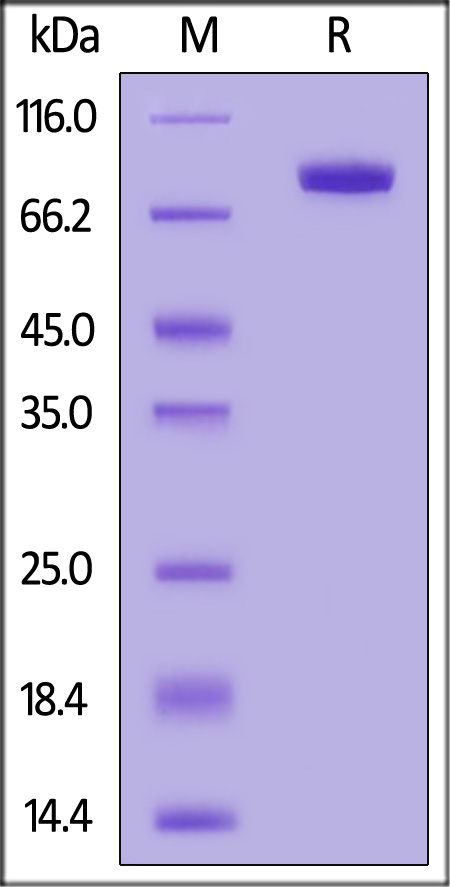DDR1 Targeting HOXA6 Facilitates Bladder Cancer Progression via Inhibiting FerroptosisXie, He, Zhang
et alJ Cell Mol Med (2025) 29 (6), e70410
Abstract: Ferroptosis is an important factor affecting the progression of bladder cancer (BC). Previous studies have confirmed that discoidin domain receptor 1 (DDR1) promotes BC progression. However, the regulatory mechanisms of BC ferroptosis are largely unknown. Therefore, this study aimed to investigate the regulatory effects of DDR1 on BC cell ferroptosis. Ferroptosis-sensitive and -resistant BC cells were screened, and reverse-transcription quantitative PCR and western blotting were used to determine the expression of DDR1 in BC cells. In vitro and in vivo assays were performed to analyse the mechanisms of DDR1 in BC ferroptosis. The ferroptosis inducer erastin inhibited DDR1 expression in TCCSUP cells. The ferroptosis inhibitor ferrostatin-1 inhibited BC cell death caused by DDR1 knockdown. DDR1 increased glutathione, glutathione peroxidase 4 and solute carrier family 7 member 11 expression, while decreasing malondialdehyde and Fe2+ levels and acyl-CoA synthetase long-chain family member 4 levels and inhibiting epithelial mesenchymal transition and neurofibromin 2-yes-associated protein. These effects were abrogated by the knockdown of homeobox A6 (HOXA6). DDR1 targeting of HOXA6 facilitated BC growth and inhibited BC ferroptosis in vivo. DDR1 promotes BC progression by inhibiting ferroptosis and targeting HOXA6. Thus, DDR1 may serve as a potential therapeutic target for BC.© 2025 The Author(s). Journal of Cellular and Molecular Medicine published by Foundation for Cellular and Molecular Medicine and John Wiley & Sons Ltd.
Discoidin domain receptor inhibitor DDR1-IN-1 induces autophagy and necroptotic cell death in malignant peripheral nerve sheath tumorLai, Lee, Weng
et alCell Death Discov (2025) 11 (1), 83
Abstract: Malignant peripheral nerve sheath tumor (MPNST) is a soft tissue sarcoma commonly associated with the tumor-predisposition disorder neurofibromatosis 1. The extracellular matrix collagens contribute to many fibrotic tumors; however, the role of collagen signaling in MPNST was unclear. This study investigated the effects of blocking the interaction between collagens and their receptors in MPNST. We first analyzed the expressions of collagen family proteins in MPNSTs and found an overall increase compared to neurofibroma. Treatment of DDR1-IN-1, a small molecule inhibitor for the collagen receptor discoidin domain receptor, induced a robust MPNST cell death, highlighting the dependence of MPNST survival on collagen signaling. DDR1-IN-1 induced MPNST cell death by activating autophagy and necroptosis signaling. Treatment of necroptosis inhibitors necrostatin-1 or necrosulfonamide reduced the numbers of DDR1-IN-1-induced necrotic cells and autolysosomes, suggesting that the autophagic process depends on necroptosis activation. Combinations of DDR1-IN-1 with other anti-MPNST agents revealed synergistic activities against MPNST. In summary, this study discovered a critical MPNST death signaling induced by the small molecule DDR1-IN-1, which might shed light on future MPNST therapeutic strategies.© 2025. The Author(s).
Stiffness regulates extracellular matrix synthesis in fibroblasts by DDR1-TGF-β/STAT3 mechanotransduction axisHan, Zhang, Lei
et alBiomater Adv (2025) 172, 214240
Abstract: For a long time, research on atherosclerosis (AS) has mainly focused on endothelial cells (ECs) and smooth muscle cells (SMCs) in blood vessels. Fibroblasts, however, being the major component in adventitia, little is known about their role. Fibroblasts are highly plastic cells, capable of undergoing phenotypic changes in response to various extracellular signals. Once activated, fibroblasts can promote fibrosis by altering the secretion of extracellular matrix (ECM). In this study, the effect of ECM stiffness on fibroblasts was investigated. Polyacrylamide (PA) gels with varying elastic moduli (1 kPa, 20 kPa and 100 kPa) were used as models for matrix stiffness. Human fibroblasts were cultured on these substrates, and their phenotypic and functional changes were examined. The data revealed that a collagen-binding receptor, Discoidin Domain Receptor 1 (DDR1), plays a central role in sensing mechanical stimuli from ECM. Matrix stiffness-induced phosphorylation of DDR1 suppresses the synthesis of ECM proteins in fibroblasts. The expression of ECM proteins on the 1 kPa substrate was significantly higher than that on the 20 kPa and 100 kPa substrates, while the phosphorylation level of DDR1 was notably reduced. After knocking out DDR1, the difference in ECM proteins expression among the three substrates with different stiffness levels disappeared. The signal transduction from DDR1 to ECM synthesis is mediated by the TGF-β/STAT3 signaling axis. Our study reveals how matrix stiffness regulates the synthesis of ECM in fibroblasts and paves the way for understanding the regulation of fibrotic process in the pathogenesis of AS.Copyright © 2025. Published by Elsevier B.V.
Discoid Domain Receptors Signaling in Macrophages-Mediated DiseasesMa, Gong, Cheng
et alInt J Gen Med (2025) 18, 907-926
Abstract: Macrophages, as a crucial component of the body's immune system, play a vital role in the onset, progression, and outcome of diseases. Discoidin domain receptors (DDRs), important members of the novel receptor tyrosine kinase superfamily, exhibit unique functions in macrophage physiology. Through interactions with the extracellular matrix, DDRs activate signaling pathways such as p38 MAPK and NF-κB, regulating macrophage adhesion, migration, and secretory functions, thereby influencing their behavior in diseases. Recent studies have indicated a direct correlation between DDRs and the progression of various diseases, including inflammation, cancer, and fibrosis. However, there remain numerous knowledge gaps regarding the specific mechanisms by which DDRs function in macrophage-mediated diseases. This article provides an in-depth summary of the regulatory mechanisms of DDRs on macrophages, detailing their modulatory roles in various diseases through macrophages and their underlying mechanisms. The aim is to offer new insights into biomedical therapies targeting DDRs and the development of novel drugs.© 2025 Ma et al.


























































 膜杰作
膜杰作 Star Staining
Star Staining















